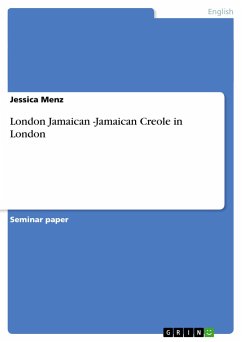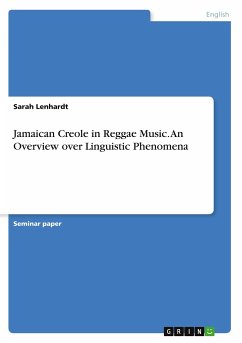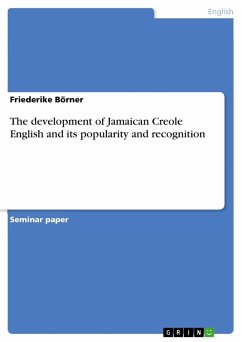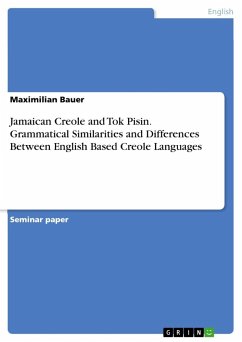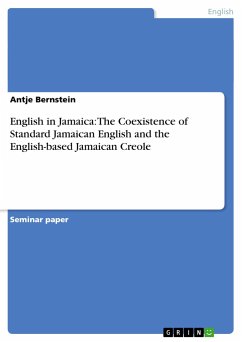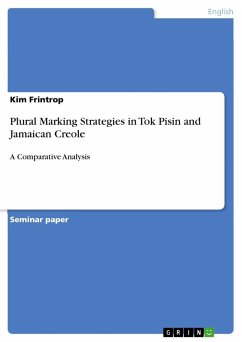Seminar paper from the year 2004 in the subject English Language and Literature Studies - Linguistics, grade: 1,0, University of Bayreuth (Lehrstuhl für Englische Sprachwissenschaft), course: English - based Pidgin and Creole Languages (and beyond), language: English, abstract: Dealing with linguistics, one clearly realises that language is anything else but a static subject. Actually, language finds itself in constant change and is shaped by its speakers and the situation they are in. One of the many influences that form language has always been contact with new people and different languages, which for example happened when the Britains began to explore the world and brought English to the new continents. Many different new varieties and languages developed, one of them being Jamaican Creole. Far away from Great Britain it found its niche in Jamaica, where it is spoken by many as their native language. Pidgins and Creoles are a well-explored subject in linguistics. But what happens when these languages return to the home countries of one of their root - languages? One of the classic examples is London Jamaican, spoken mostly by black immigrants and their descendants in London. In this paper I am going to outline the history and sociolinguistic situation of London Jamaican and its characteristic features regarding grammar and phonology. Also, I will describe how two extremely distinct varieties, Jamaican Creole and London English, have influenced each other and how London Jamaican functions in everyday contexts. In the early 16th century European nations began exploring the world and soon secured their newly gained territories by making them their colonies. The Caribbean Islands, including Jamaica as well, were colonized by the British, Spanish, Dutch, French and others. Together with the languages of the natives and of Africans, who came to the Caribbean as slaves, there was a strong demand for a common language to make communication between these different groups possible. This led to the development of pidgin languages, i.e. the mixture of at least two different languages. Such a new 'lingua franca' was mainly used in contact situations and not spoken as a native language. Often, this development resumed in the process of creolisation. Pidgins were becoming native languages, developing a more complex vocabulary and grammar. Usually creoles exist alongside more prestigious standard languages, e.g. Jamaican Standard English, of which the creole forms are often considered as 'wrong'. In Jamaica, English was the lexifier, thus most Jamaican Creole words derive from British English.

